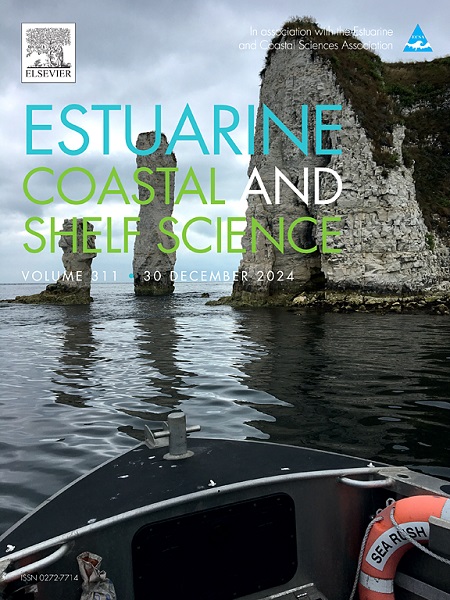Plankton communities in oligotrophic offshore environments in the eastern adriatic sea in relation to mesoscale hydrodynamic fluctuations
IF 2.6
3区 地球科学
Q1 MARINE & FRESHWATER BIOLOGY
引用次数: 0
Abstract
Oligotrophic marine systems respond rapidly to episodic nutrient enrichment with an increase in productivity at all trophic levels. In order to link the prevailing hydrodynamic processes with plankton indicators, we investigated the biomass, composition and production of plankton communities as well as the physical and chemical parameters in the central Adriatic areas of Blitvenica and Jabuka at three stations during two seasons (November 2020 and May 2021). The analysis of thermohaline properties and horizontal currents showed that warmer and more saline water from the southern Adriatic flowed along the coast in November and that there was a strong freshwater influence in May. Different hydrodynamic processes in the different seasons lead to different nutrient sources, e.g. higher concentrations of phosphate and inorganic nitrogen in November were the result of the advection of warmer and saltier water from the southern Adriatic, while May was characterized by a higher concentration of organic nitrogen and the influence of the Krka River. Both situations were also reflected in the composition and size of the phytoplankton, zooplankton and bacterioplankton community. In November, picoplankton dominated the phytoplankton biomass and primary production, while in May, nanoplankton predominated. Microplankton was most strongly represented in the lower layers during both sampling season characterized by certain phytoplankton species. The development of larger phytoplankton cells in May favored the development of zooplankton, which was reflected in an increase in the number of copepods and a lower diversity compared to November. Of all the biological parameters analysed, only bacterial production (BP) was high in May at the station in Blitvenica (BL1).
东亚得里亚海寡营养近海环境中浮游生物群落与中尺度水动力波动的关系
低营养海洋系统对偶发性营养丰富反应迅速,在所有营养水平上的生产力都有所增加。为了将主要的水动力过程与浮游生物指标联系起来,我们在两个季节(2020年11月和2021年5月)的三个站点调查了亚得里亚海中部布利特韦尼察和贾布卡地区浮游生物群落的生物量、组成和产量以及物理和化学参数。对温盐特性和水平洋流的分析表明,11月来自亚得里亚海南部的水温更高、盐度更高的水沿海岸流动,5月有强烈的淡水影响。不同季节不同的水动力过程导致不同的营养源,例如11月较高的磷酸盐和无机氮浓度是来自亚得里亚海南部较暖、较咸的水平流的结果,而5月有机氮浓度较高,受克尔卡河的影响。这两种情况也反映在浮游植物、浮游动物和浮游细菌群落的组成和大小上。11月浮游植物生物量和初级产量以微浮游生物为主,5月以纳米浮游生物为主。在两个取样季节,以某些浮游植物种类为特征的下层浮游生物最强烈。5月浮游植物细胞发育较大,有利于浮游动物的发育,表现为桡足类数量增加,多样性低于11月。在所有分析的生物学参数中,只有Blitvenica (BL1)站点的细菌产量(BP)在5月份较高。
本文章由计算机程序翻译,如有差异,请以英文原文为准。
求助全文
约1分钟内获得全文
求助全文
来源期刊
CiteScore
5.60
自引率
7.10%
发文量
374
审稿时长
9 months
期刊介绍:
Estuarine, Coastal and Shelf Science is an international multidisciplinary journal devoted to the analysis of saline water phenomena ranging from the outer edge of the continental shelf to the upper limits of the tidal zone. The journal provides a unique forum, unifying the multidisciplinary approaches to the study of the oceanography of estuaries, coastal zones, and continental shelf seas. It features original research papers, review papers and short communications treating such disciplines as zoology, botany, geology, sedimentology, physical oceanography.

 求助内容:
求助内容: 应助结果提醒方式:
应助结果提醒方式:


